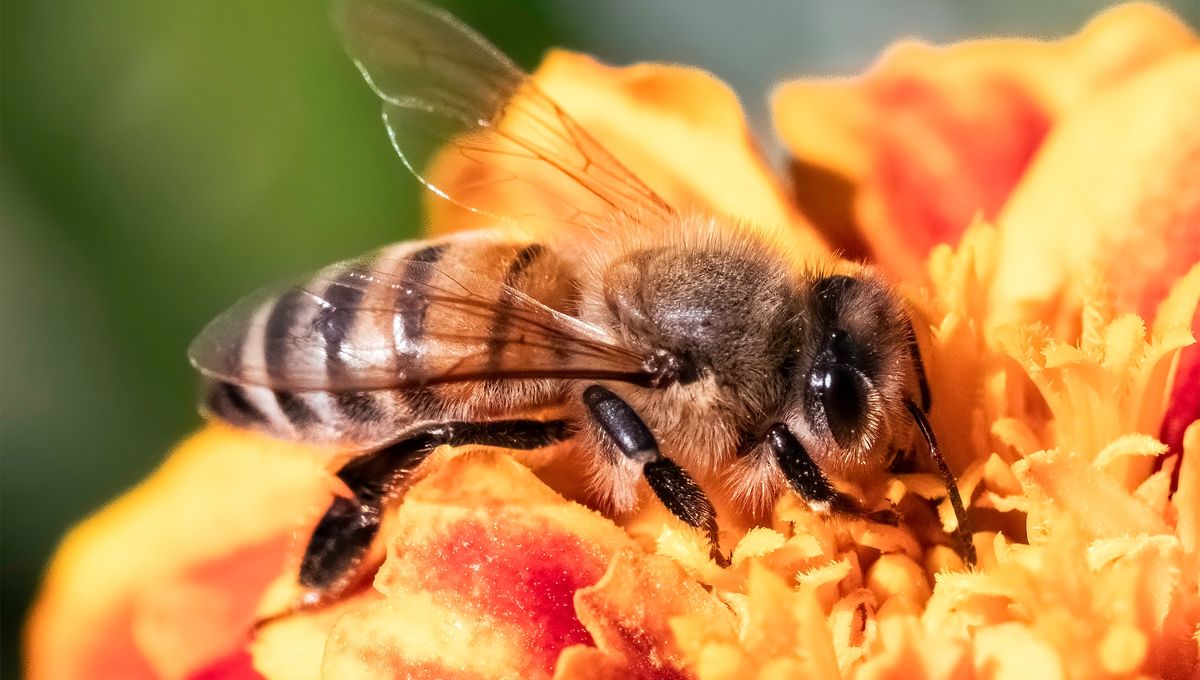
In the summer of 2010, not long after beekeeping was made legal in New York City, a mysterious phenomenon arose in the hives of Red Hook, Brooklyn. As though living up to the colorful part of the neighborhood’s name, bright red bees began buzzing around. So too were their hives dripping with red, instead of the usual amber-colored honey. It looked like a blood bath (that is, if bees actually had red blood). What the hell was going on?
Beekeepers Tim O’Neal, Gita N, and the very appropriately named Cerise Mayo set to finding out, meeting up at the hives of the Added Value Red Hook farm to collect samples to be sent off to the state food lab.
“I arrived at the farm prepared for the worst. I had already seen the pictures of the red ‘honey’ on Facebook, but they didn’t do it justice,” wrote O’Neal in a blog post detailing the event. “Bright red, practically fluorescent bees flying into the hive, completely unaware of the alarm they were inciting just doing their thing.”
The bees weren’t actually red, as it turned out. Instead, they merely appeared it thanks to their honey stomachs, or crops – a specialized sac that’s used to store water, or nectar without it being digested – being full to the brim with something red, showing through their partially translucent exoskeletons. The state lab would hopefully reveal what that “something red” was.
Fellow beekeeper David Selig had a theory. His hives were particularly close to a factory belonging to Dell’s Maraschino Cherry Company, where – you guessed it – bright red maraschino cherries were being produced.
Selig’s suspicions appear to have been correct. The results came back from the lab showing that the honey samples were positive for Red 40 – the same food dye used in the maraschino cherries. Somehow, the bees had been able to access the cherries and/or the syrup they come in, and had an almighty feast.
And who could blame them? The cherries were packed with high-fructose corn syrup – a quick and easy source of food compared to going flower to flower, day after day in search of sweet, sweet nectar.
“A lot of people have a very pastoral view of bees: flying from flower to flower slowly, sedately, looking for food, dancing their way toward a hive full of honey happily donated to our kitchens and tables. The reality is frantic, a constant struggle for survival against a legion of enemies,” explained O’Neal in another blog post.
“So when honeybees find a source of high-density food, such as the high-fructose corn syrup (HFCS) used in the manufacture of maraschino cherries, they don’t think twice about whether the source is natural, safe, or convenient. They take it for what it is – a chance to make it to next year.”
Mystery solved – but while O’Neal mentions that stories like this are actually pretty common, with blue, green, and even peppermint-flavored honey reportedly popping up over the years, this particular shade of red isn’t likely to cause problems again.
Earlier this year, US Health Secretary Robert F Kennedy Jr announced Red 40 as one of several petroleum-based synthetic food dyes to be banned and phased out of use by the end of 2026, hot on the heels of the Food and Drug Administration’s ban of Red 3 back in January.
Not that the baby bees the honey would be destined for would be missing out on much – apparently it didn’t taste that great anyway.
Source Link: 15 Years Ago, Bees In Brooklyn Appeared Red After Snacking Where They Shouldn’t